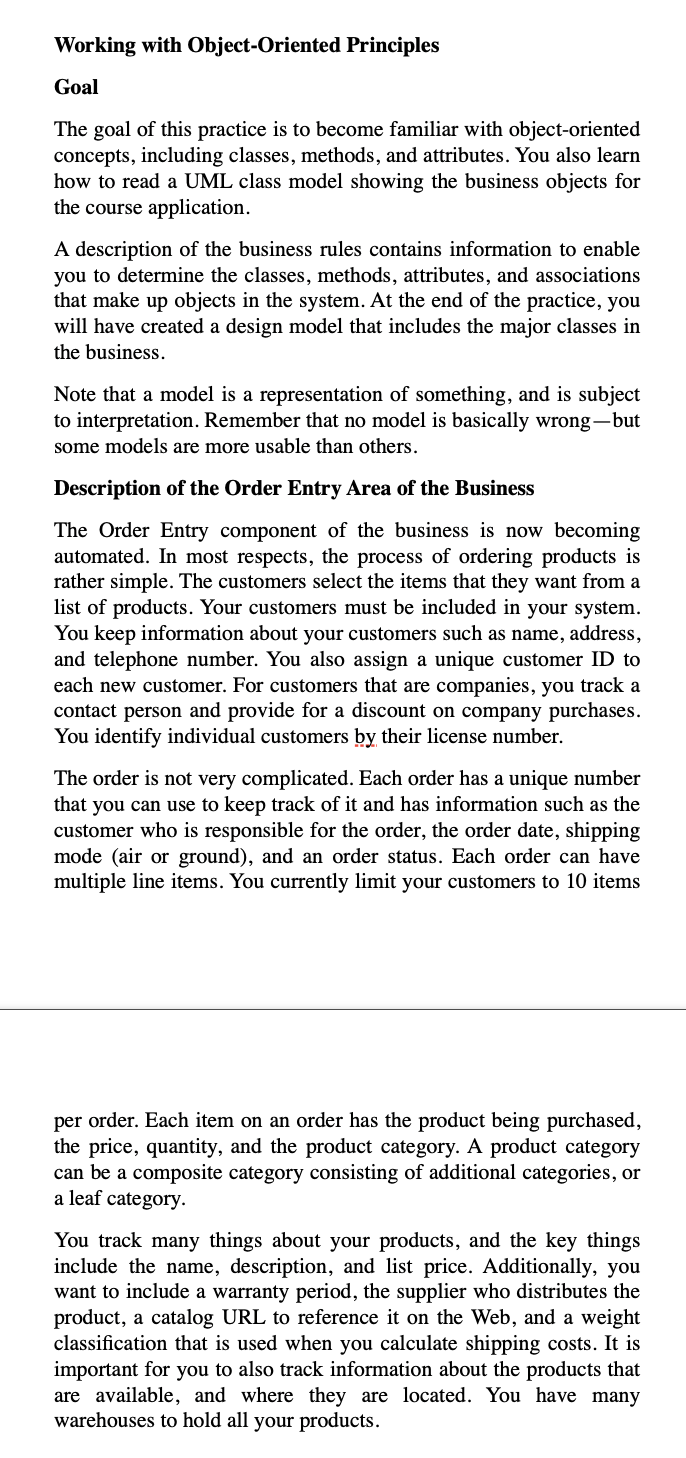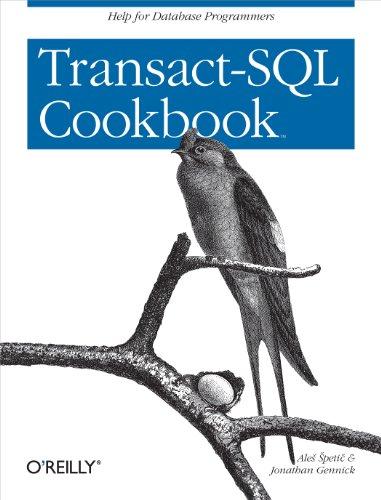Answered step by step
Verified Expert Solution
Question
1 Approved Answer
Java Please! Working with Object-Oriented Principles Goal The goal of this practice is to become familiar with object-oriented concepts, including classes, methods, and attributes. You

Java Please!
Working with Object-Oriented Principles Goal The goal of this practice is to become familiar with object-oriented concepts, including classes, methods, and attributes. You also learn how to read a UML class model showing the business objects for the course application. A description of the business rules contains information to enable you to determine the classes, methods, attributes, and associations that make up objects in the system. At the end of the practice, you will have created a design model that includes the major classes in the business. Note that a model is a representation of something, and is subject to interpretation. Remember that no model is basically wrong-but some models are more usable than others. Description of the Order Entry Area of the Business The Order Entry component of the business is now becoming automated. In most respects, the process of ordering products is rather simple. The customers select the items that they want from a list of products. Your customers must be included in your system. You keep information about your customers such as name, address, and telephone number. You also assign a unique customer ID to each new customer. For customers that are companies, you track a contact person and provide for a discount on company purchases. You identify individual customers by their license number. The order is not very complicated. Each order has a unique number that you can use to keep track of it and has information such as the customer who is responsible for the order, the order date, shipping mode (air or ground), and an order status. Each order can have multiple line items. You currently limit your customers to 10 items per order. Each item on an order has the product being purchased, the price, quantity, and the product category. A product category can be a composite category consisting of additional categories, or a leaf category. You track many things about your products, and the key things include the name, description, and list price. Additionally, you want to include a warranty period, the supplier who distributes the product, a catalog URL to reference it on the Web, and a weight classification that is used when you calculate shipping costs. It is important for you to also track information about the products that are available, and where they are located. You have many warehouses to hold all your products. Working with Object-Oriented Principles Goal The goal of this practice is to become familiar with object-oriented concepts, including classes, methods, and attributes. You also learn how to read a UML class model showing the business objects for the course application. A description of the business rules contains information to enable you to determine the classes, methods, attributes, and associations that make up objects in the system. At the end of the practice, you will have created a design model that includes the major classes in the business. Note that a model is a representation of something, and is subject to interpretation. Remember that no model is basically wrong-but some models are more usable than others. Description of the Order Entry Area of the Business The Order Entry component of the business is now becoming automated. In most respects, the process of ordering products is rather simple. The customers select the items that they want from a list of products. Your customers must be included in your system. You keep information about your customers such as name, address, and telephone number. You also assign a unique customer ID to each new customer. For customers that are companies, you track a contact person and provide for a discount on company purchases. You identify individual customers by their license number. The order is not very complicated. Each order has a unique number that you can use to keep track of it and has information such as the customer who is responsible for the order, the order date, shipping mode (air or ground), and an order status. Each order can have multiple line items. You currently limit your customers to 10 items per order. Each item on an order has the product being purchased, the price, quantity, and the product category. A product category can be a composite category consisting of additional categories, or a leaf category. You track many things about your products, and the key things include the name, description, and list price. Additionally, you want to include a warranty period, the supplier who distributes the product, a catalog URL to reference it on the Web, and a weight classification that is used when you calculate shipping costs. It is important for you to also track information about the products that are available, and where they are located. You have many warehouses to hold all your productsStep by Step Solution
There are 3 Steps involved in it
Step: 1

Get Instant Access to Expert-Tailored Solutions
See step-by-step solutions with expert insights and AI powered tools for academic success
Step: 2

Step: 3

Ace Your Homework with AI
Get the answers you need in no time with our AI-driven, step-by-step assistance
Get Started


